There's nothing worse than an ad that keeps popping up for something you'd never buy. About 39% of internet users agree, feeling that online ads aren't relevant to them. So it's no wonder that one in four people will leverage some sort of ad blocker in 2021.
An ad blocker is software that's meant to improve a user's online experience by removing or changing digital ads. It's designed to make browsing simpler, so you don't have a giant flashing ad taking up half the screen while you research customers and spy on a competitor's latest product launch.
Still, digital advertising is on the rise.
Global digital ad spend is expected to exceed $455 billion this year, which means an increase in the number of banner, display, and news feed ads. This barrage is pushing more internet users toward ad blocking tools so they can shop and scroll in peace. To truly understand ad blocking statistics, it's important to have a grasp on the digital ad landscape.
But how many people are actually using ad blockers? And what are their reasons for getting rid of ads? This list of ad blocking statistics will answer those questions and more.
Whether you're looking for tips to attract customers or wondering how to boost clicks, you can find the stats you need to understand your audience and make your next campaign a hit.
Digital Advertising Statistics
1. Global digital ad spend is expected to exceed $455 billion this year. (Statista, 2021)
2. The internet is considered the most important medium for advertisers and accounts for 51% of total media ad spend in 2020. (Statista, 2021)
3. The average internet user spends six hours and 55 minutes on the internet each day. (Hootsuite, 2021)
4. Researching products and brands ranks 7th on the list of reasons why global internet users go online. (Hootsuite, 2021)
5. Digital advertising revenue is projected to grow by 15.4% in 2021. (Statista, 2021)
6. Global digital ad spend increased 12.7% ($43 billion) from 2019-2020. (Hootsuite, 2021)
7. In 2021, paid search ad spend increased 8.4% between Q1 and Q2. In the same timeframe, paid ad clicks decreased by 7.6%. (Hootsuite, 2021)
8. In a study about how advertising influences customer perception, 41% of respondents said that an ad placed around relevant content sparked a positive brand perception. (Statista, 2020)
9. 63% of internet users in the U.S. said they have a negative attitude towards ads in online videos, and about 47% of people said the same about website ads. ( Statista, 2021)10. In a 2020 survey conducted in the U.S., almost 50% of online users had a negative attitude toward website ads when asked how they felt about digital advertising. (Statista, 2021)
11. 35% of people feel marketing and advertising meets their needs. (Merkle, 2020)
Ad Blocker Stats to Know
12. Approximately one in four internet users will leverage some sort of ad blocker in 2021. (eMarketer, 2021)
13. In the last quarter of 2019, there were 763.5 million ad blocker users worldwide. (Statista, 2019)
14. 37.5% of global internet users block online advertising with an ad blocker tool. (Hootsuite, 2021)
15. About 26% of internet users in the U.S. blocked advertising on their devices in 2019, which meant one-quarter of paid advertising messages never reached their audiences. (Statista, 2019)
16. 20% of online sessions are blocked with an ad blocker tool. (AudienceProject, 2020)
17. More people are whitelisting websites in their ad blockers, allowing the ads to stay active. 54% of people in the U.S. whitelisted sites in 2020, up from 40% in 2018. (AudienceProject, 2020)
18. Most ad blocking happens on desktops and laptops, as it's more difficult to block ads within smartphones apps. (eMarketer, 2019)
19. Ad blocker monetization strategies are on the rise. Acceptable Ads, software that turns ad blockers into ad filters to display relevant content, reached about 200 million users around the world in 2020. (Statista, 2021)
20. 56 of the top 100 U.S. publishers used at least one ad block monetization strategy. (Statista, 2019)
21. 47% of internet users in the U.S. used ad blockers on their desktops in 2020, down from 49% in 2017. (Statista, 2020)
Desktop ad block usage rate in the United States from 2017 to 2020
22. Over 44% of ad block users from the U.S. said they were more willing to support sites that are Better Ads-certified than sites that were not Better Ads-certified. (Statista, 2020)
23. By the end of 2020, there were approximately 586 million monthly active users of mobile ad blocking browsers worldwide. (Statista, 2020)
Reasons for Ad Blockers
24. The top reasons why internet users around the world use ad blockers: (Hootsuite, 2021)
- Over 61% of people say there are too many ads.
- Nearly 54% of people say ads get in the way.
- 40% of people want to stop any inappropriate content from popping up.
- 39% of people believe ads aren't relevant to them.
- Over 38% of people block ads to protect their privacy.
- 33% of people use ad blockers to improve device performance.
- Nearly 27% of users block ads to prevent companies from collecting personal data.
25. In the U.S., 44% of internet users say they use ad blockers because they don't want their online behavior to be tracked. (Statista, 2021)
26. 71% of people use ad blockers because they find websites more manageable without banner ads (Statista, 2021)
27. 66% of internet users in the U.S. say that video ads that play automatically with sound are the most annoying ads, while 55% said the same about video ads without sound. (Statista, 2019)
Most annoying types of digital ads according to internet users in the United States as of July 2019
Ad Blocker Demographic Stats
28. In a survey conducted on U.S. internet users, 33% of women respondents and 49% of male respondents were using an ad blocker by the end of 2020. (Statista, 2020)
29. 16.5% of global internet users aged 16-64 feel represented in the advertising they see. This drops to 10.6% for users in the U.S.. (Hootsuite, 2021)
30. Worldwide, 19.6% of men aged 25-34 years old feel represented in advertising — the highest of any group. But this group also is the most likely to use ad blocker tools, with 43% using some sort of ad blocking software. (Hootsuite, 2021)
31. 10% of men and women aged 55-64 years old feel represented in advertising—the lowest percentage of any age group — yet this group is the least likely to use tools to block online ads. (Hootsuite, 2021)
32. Approximately 73 million people in the U.S. had installed some form of ad blocker software, plugin, or brower by 2019. (Statista, 2019)
33. 60% of US adults aged 18-24 use desktop or laptop ad blockers, compared to 18% that block ads on smartphones. (eMarketer, 2021)
34. China has the highest percentage of people using an ad blocker tool at 46%. Ghana has the least amount of people using ad blockers at almost 13%. (Hootsuite, 2021)
35. Nearly 30% of women aged 55-64 use ad blockers, the lowest percentage of any other age or gender group around the world. (Hootsuite, 2021)
36. Almost 44% of men aged 25-34 years old use ad blockers, the highest percentage of any other age or gender group. (Hootsuite, 2021)
37. 10% of people using ad blockers in the U.S. pay for the technology. (AudienceProject, 2020)
38. 45% of internet users between the ages of 15 to 25 use an ad blocker. The same is true for 42% of respondents aged 26 and 33 years, as well as people aged 46 to 55 years. (Statista, 2021)
39. People with a higher income are more likely to feel like personalization is invasive and didn’t want to share their personal information, no matter the benefit they received. (Merkle, 2020)
40. 86% of internet users in the U.S. knew what ad blockers were when asked. ( Statista, 2020)Apply Your Ad Blocker Knowledge
Ad blockers aren't going anywhere, so it's good to reference these ad blocker statistics as you set up your next campaign. With the right information on ad blocker usage, you can understand who's most likely to click and how to best reach your audience.
from Marketing https://blog.hubspot.com/marketing/ad-blocking-stats
There's nothing worse than an ad that keeps popping up for something you'd never buy. About 39% of internet users agree, feeling that online ads aren't relevant to them. So it's no wonder that one in four people will leverage some sort of ad blocker in 2021.
An ad blocker is software that's meant to improve a user's online experience by removing or changing digital ads. It's designed to make browsing simpler, so you don't have a giant flashing ad taking up half the screen while you research customers and spy on a competitor's latest product launch.
Still, digital advertising is on the rise.
Global digital ad spend is expected to exceed $455 billion this year, which means an increase in the number of banner, display, and news feed ads. This barrage is pushing more internet users toward ad blocking tools so they can shop and scroll in peace. To truly understand ad blocking statistics, it's important to have a grasp on the digital ad landscape.
But how many people are actually using ad blockers? And what are their reasons for getting rid of ads? This list of ad blocking statistics will answer those questions and more.
Whether you're looking for tips to attract customers or wondering how to boost clicks, you can find the stats you need to understand your audience and make your next campaign a hit.
Digital Advertising Statistics
1. Global digital ad spend is expected to exceed $455 billion this year. (Statista, 2021)
2. The internet is considered the most important medium for advertisers and accounts for 51% of total media ad spend in 2020. (Statista, 2021)
3. The average internet user spends six hours and 55 minutes on the internet each day. (Hootsuite, 2021)
4. Researching products and brands ranks 7th on the list of reasons why global internet users go online. (Hootsuite, 2021)
5. Digital advertising revenue is projected to grow by 15.4% in 2021. (Statista, 2021)
6. Global digital ad spend increased 12.7% ($43 billion) from 2019-2020. (Hootsuite, 2021)
7. In 2021, paid search ad spend increased 8.4% between Q1 and Q2. In the same timeframe, paid ad clicks decreased by 7.6%. (Hootsuite, 2021)
8. In a study about how advertising influences customer perception, 41% of respondents said that an ad placed around relevant content sparked a positive brand perception. (Statista, 2020)
9. 63% of internet users in the U.S. said they have a negative attitude towards ads in online videos, and about 47% of people said the same about website ads. ( Statista, 2021)10. In a 2020 survey conducted in the U.S., almost 50% of online users had a negative attitude toward website ads when asked how they felt about digital advertising. (Statista, 2021)
11. 35% of people feel marketing and advertising meets their needs. (Merkle, 2020)
Ad Blocker Stats to Know
12. Approximately one in four internet users will leverage some sort of ad blocker in 2021. (eMarketer, 2021)
13. In the last quarter of 2019, there were 763.5 million ad blocker users worldwide. (Statista, 2019)
14. 37.5% of global internet users block online advertising with an ad blocker tool. (Hootsuite, 2021)
15. About 26% of internet users in the U.S. blocked advertising on their devices in 2019, which meant one-quarter of paid advertising messages never reached their audiences. (Statista, 2019)
16. 20% of online sessions are blocked with an ad blocker tool. (AudienceProject, 2020)
17. More people are whitelisting websites in their ad blockers, allowing the ads to stay active. 54% of people in the U.S. whitelisted sites in 2020, up from 40% in 2018. (AudienceProject, 2020)
18. Most ad blocking happens on desktops and laptops, as it's more difficult to block ads within smartphones apps. (eMarketer, 2019)
19. Ad blocker monetization strategies are on the rise. Acceptable Ads, software that turns ad blockers into ad filters to display relevant content, reached about 200 million users around the world in 2020. (Statista, 2021)
20. 56 of the top 100 U.S. publishers used at least one ad block monetization strategy. (Statista, 2019)
21. 47% of internet users in the U.S. used ad blockers on their desktops in 2020, down from 49% in 2017. (Statista, 2020)
Desktop ad block usage rate in the United States from 2017 to 2020
22. Over 44% of ad block users from the U.S. said they were more willing to support sites that are Better Ads-certified than sites that were not Better Ads-certified. (Statista, 2020)
23. By the end of 2020, there were approximately 586 million monthly active users of mobile ad blocking browsers worldwide. (Statista, 2020)
Reasons for Ad Blockers
24. The top reasons why internet users around the world use ad blockers: (Hootsuite, 2021)
- Over 61% of people say there are too many ads.
- Nearly 54% of people say ads get in the way.
- 40% of people want to stop any inappropriate content from popping up.
- 39% of people believe ads aren't relevant to them.
- Over 38% of people block ads to protect their privacy.
- 33% of people use ad blockers to improve device performance.
- Nearly 27% of users block ads to prevent companies from collecting personal data.
25. In the U.S., 44% of internet users say they use ad blockers because they don't want their online behavior to be tracked. (Statista, 2021)
26. 71% of people use ad blockers because they find websites more manageable without banner ads (Statista, 2021)
27. 66% of internet users in the U.S. say that video ads that play automatically with sound are the most annoying ads, while 55% said the same about video ads without sound. (Statista, 2019)
Most annoying types of digital ads according to internet users in the United States as of July 2019
Ad Blocker Demographic Stats
28. In a survey conducted on U.S. internet users, 33% of women respondents and 49% of male respondents were using an ad blocker by the end of 2020. (Statista, 2020)
29. 16.5% of global internet users aged 16-64 feel represented in the advertising they see. This drops to 10.6% for users in the U.S.. (Hootsuite, 2021)
30. Worldwide, 19.6% of men aged 25-34 years old feel represented in advertising — the highest of any group. But this group also is the most likely to use ad blocker tools, with 43% using some sort of ad blocking software. (Hootsuite, 2021)
31. 10% of men and women aged 55-64 years old feel represented in advertising—the lowest percentage of any age group — yet this group is the least likely to use tools to block online ads. (Hootsuite, 2021)
32. Approximately 73 million people in the U.S. had installed some form of ad blocker software, plugin, or brower by 2019. (Statista, 2019)
33. 60% of US adults aged 18-24 use desktop or laptop ad blockers, compared to 18% that block ads on smartphones. (eMarketer, 2021)
34. China has the highest percentage of people using an ad blocker tool at 46%. Ghana has the least amount of people using ad blockers at almost 13%. (Hootsuite, 2021)
35. Nearly 30% of women aged 55-64 use ad blockers, the lowest percentage of any other age or gender group around the world. (Hootsuite, 2021)
36. Almost 44% of men aged 25-34 years old use ad blockers, the highest percentage of any other age or gender group. (Hootsuite, 2021)
37. 10% of people using ad blockers in the U.S. pay for the technology. (AudienceProject, 2020)
38. 45% of internet users between the ages of 15 to 25 use an ad blocker. The same is true for 42% of respondents aged 26 and 33 years, as well as people aged 46 to 55 years. (Statista, 2021)
39. People with a higher income are more likely to feel like personalization is invasive and didn’t want to share their personal information, no matter the benefit they received. (Merkle, 2020)
40. 86% of internet users in the U.S. knew what ad blockers were when asked. ( Statista, 2020)Apply Your Ad Blocker Knowledge
Ad blockers aren't going anywhere, so it's good to reference these ad blocker statistics as you set up your next campaign. With the right information on ad blocker usage, you can understand who's most likely to click and how to best reach your audience.

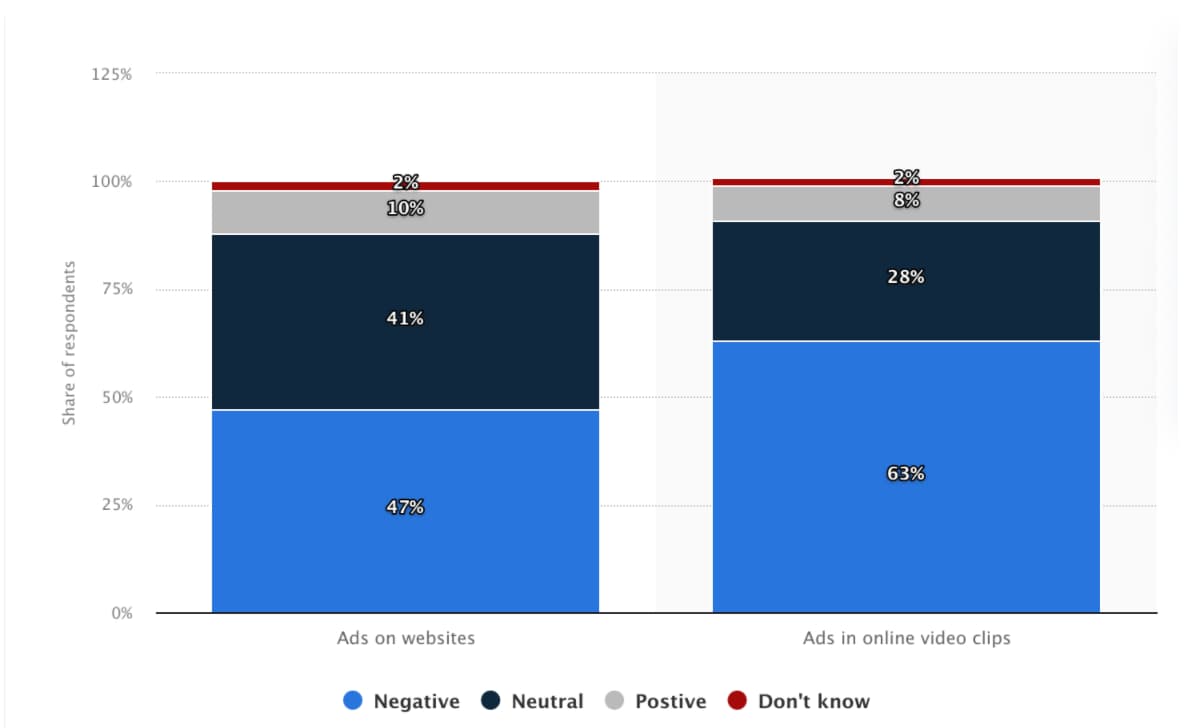
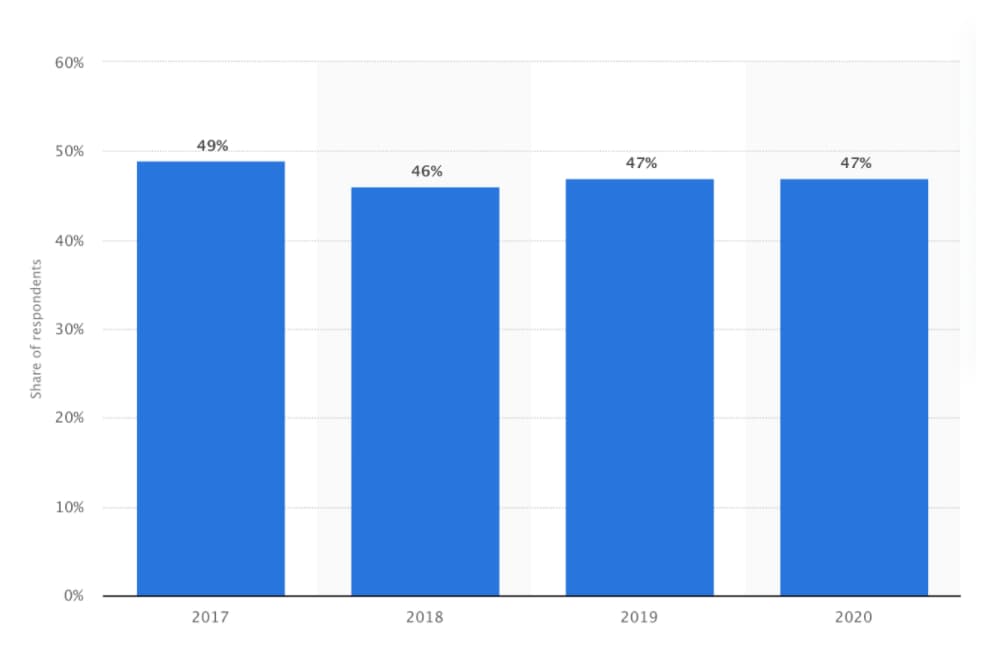
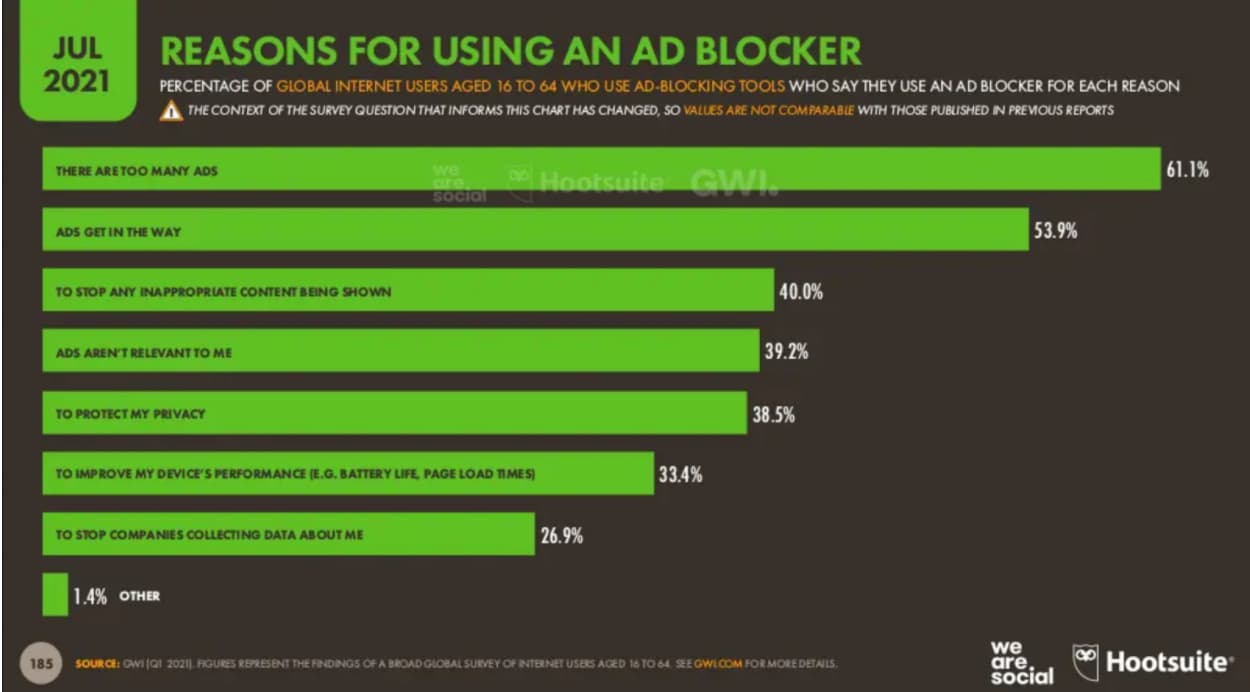
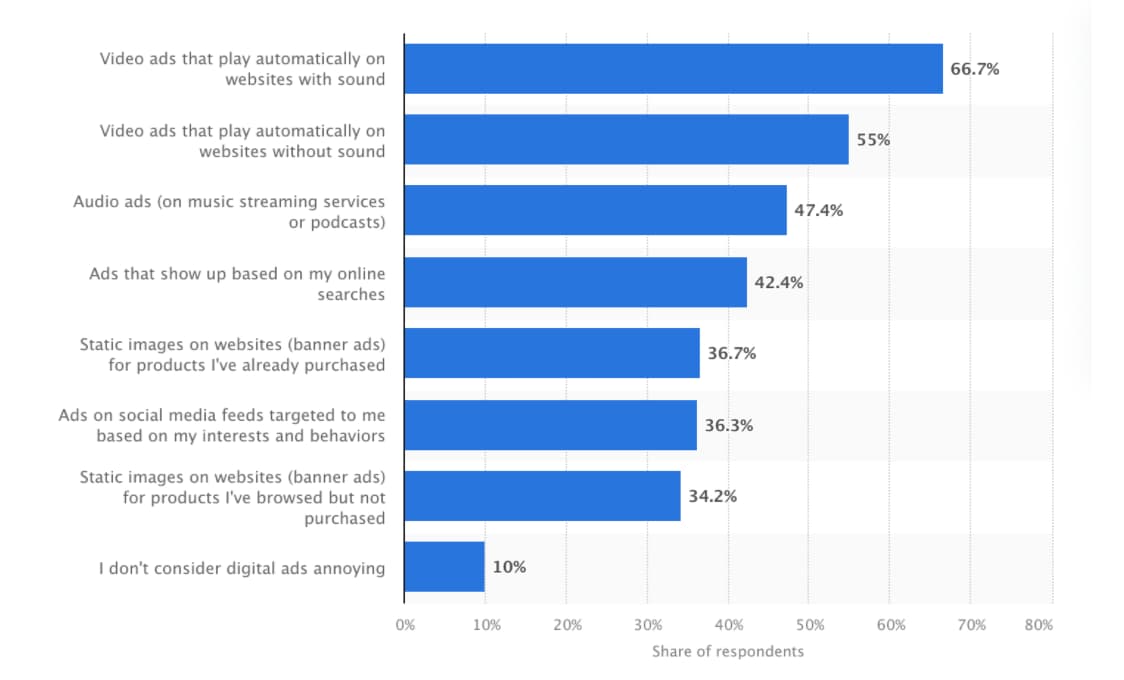
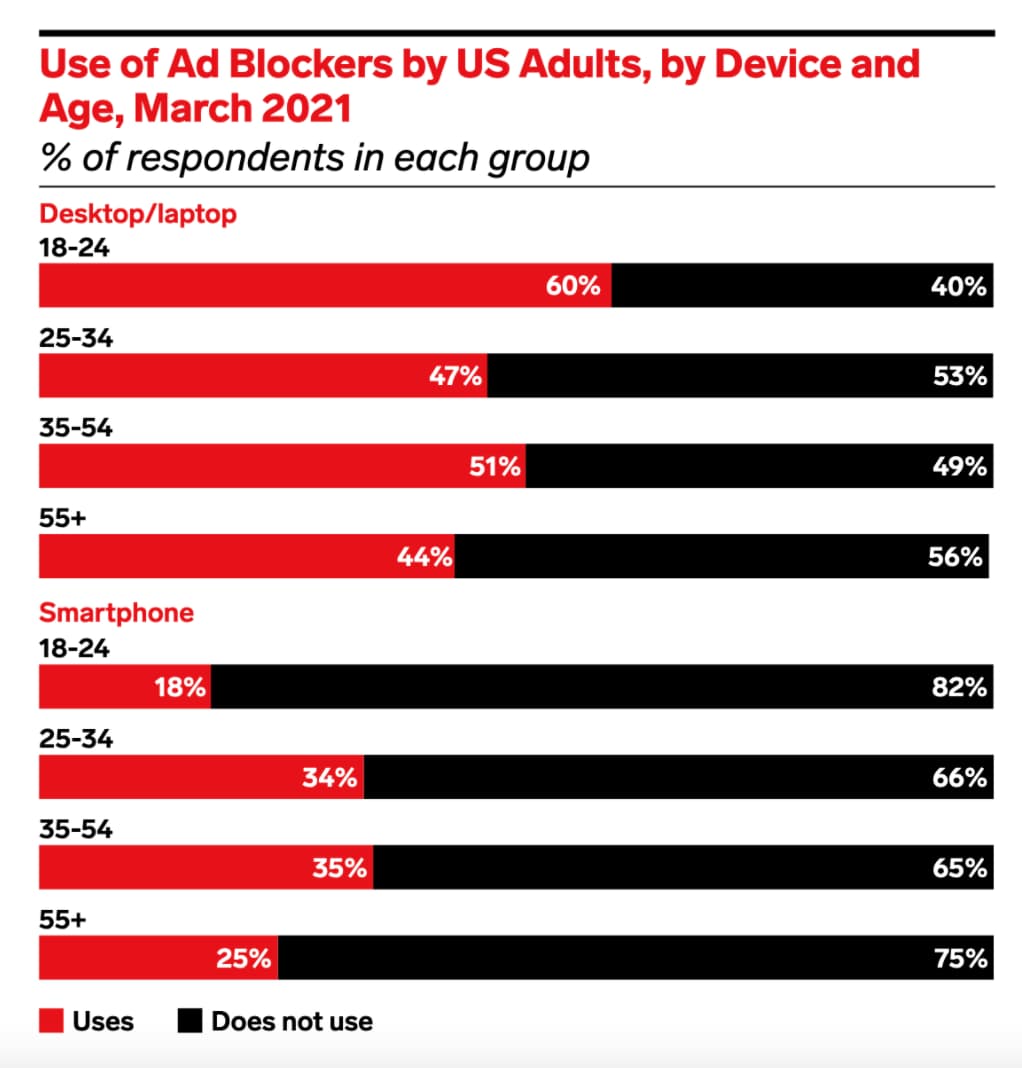
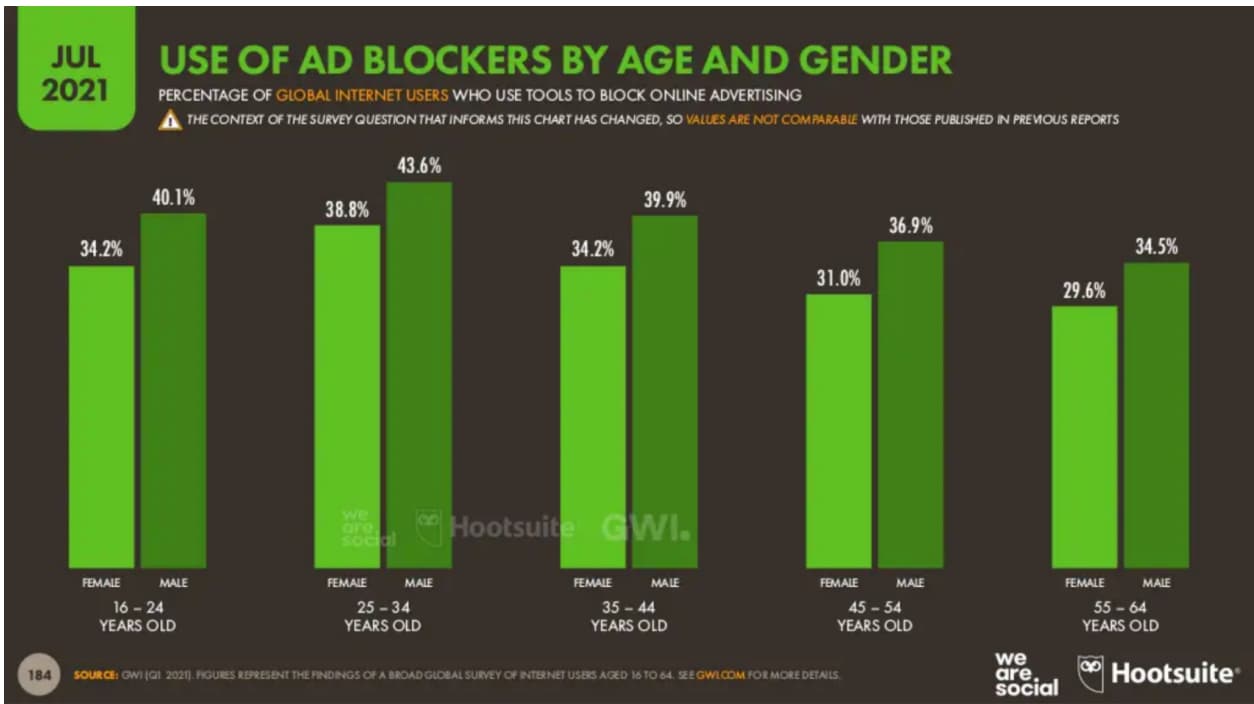

No hay comentarios:
Publicar un comentario